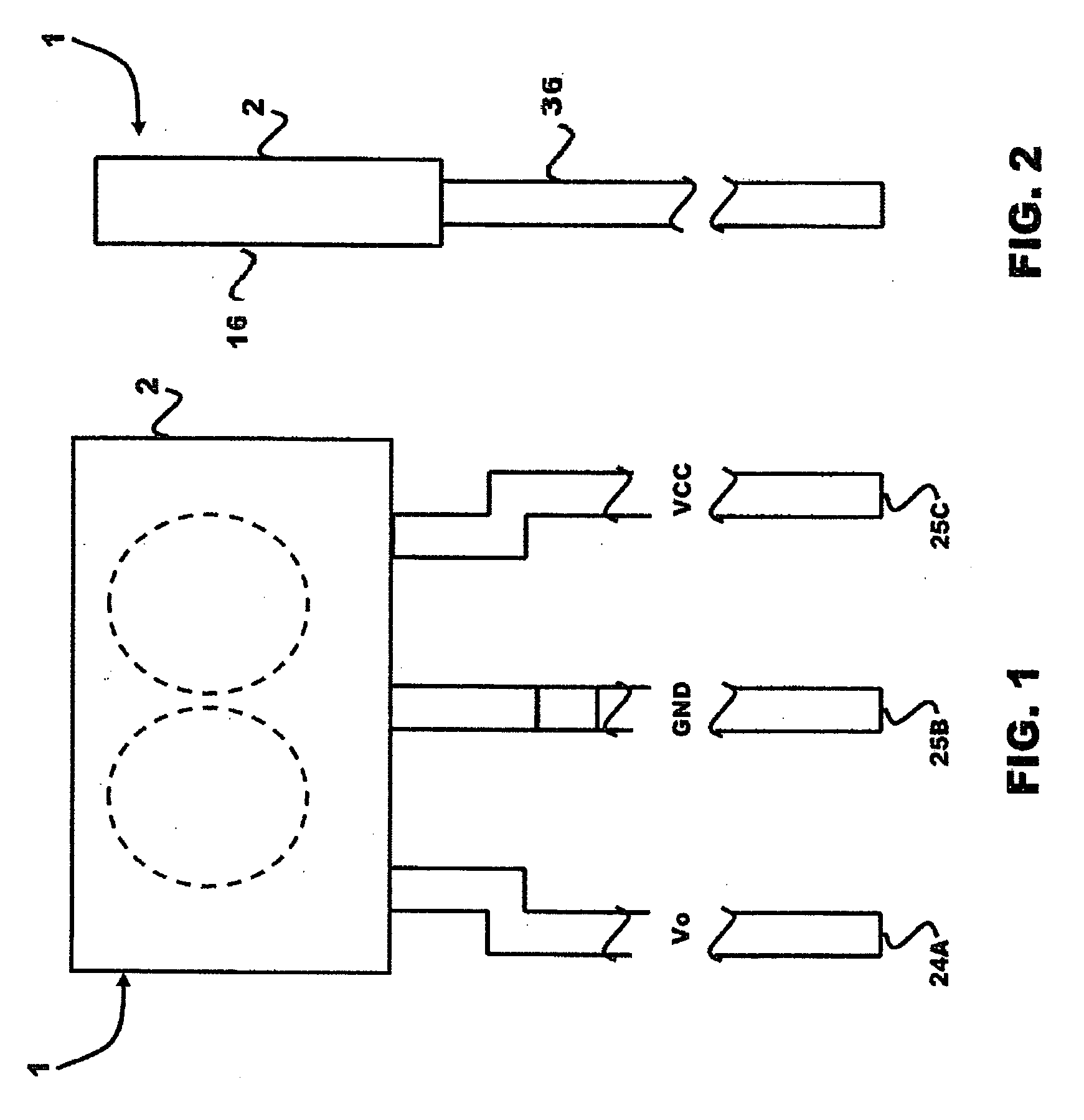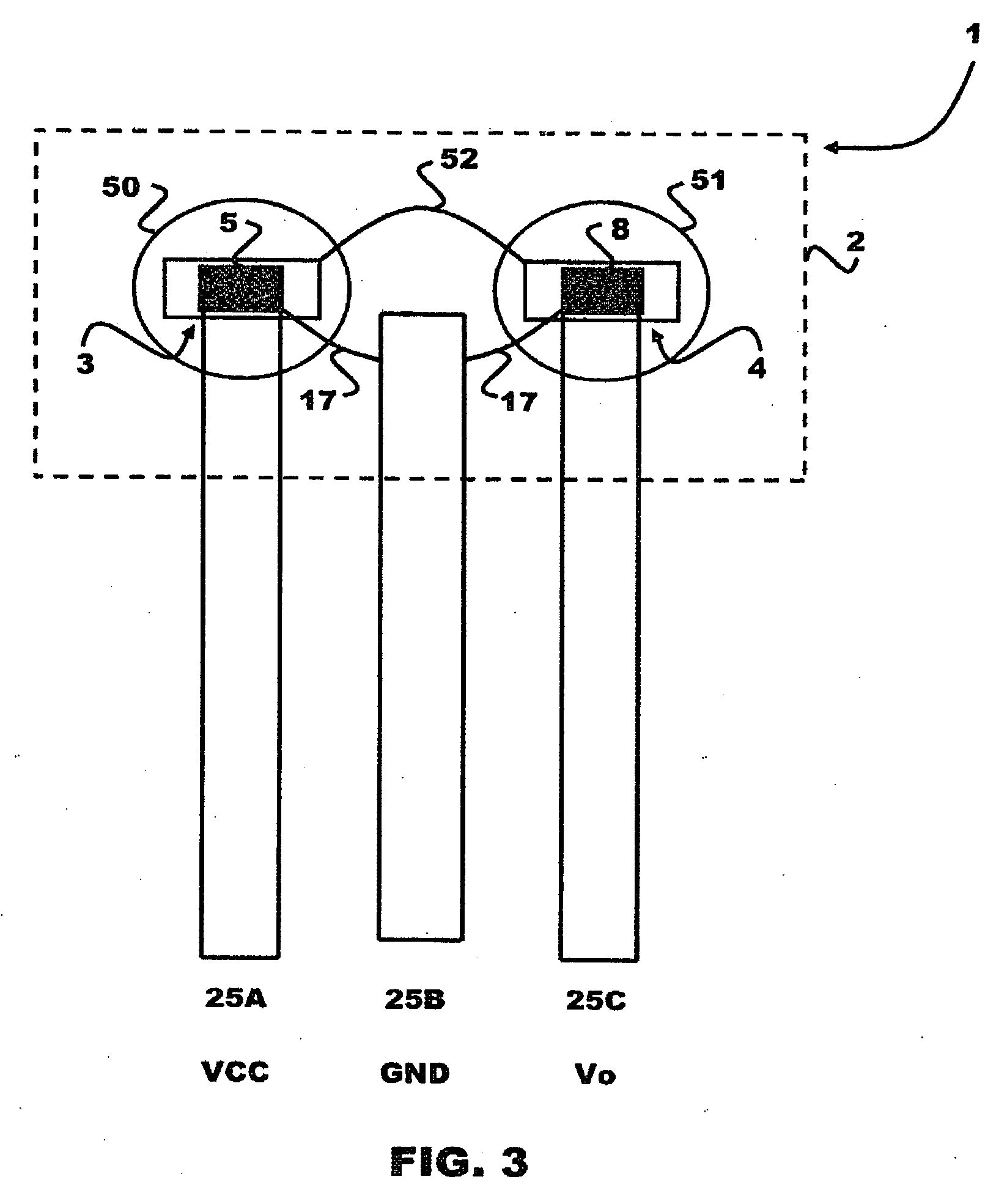Low-cost compact bar code sensor
a bar code sensor, compact technology, applied in the field of sensors, can solve the problems of high manufacturing cost, short working distance, inefficient and unreliable operation of bar code sensor systems, limit the application of bar code sensors in many fields, etc., to achieve better manufacturing accuracy, large working distance, and align more simply and more accurately
- Summary
- Abstract
- Description
- Claims
- Application Information
AI Technical Summary
Benefits of technology
Problems solved by technology
Method used
Image
Examples
Embodiment Construction
[0036]The particular values and configurations discussed in these non-limiting examples can be varied and are cited merely to illustrate at least one embodiment of the present invention and are not intended to limit the scope of the invention.
[0037]Referring to FIGS. 1 & 2 of the accompanying drawings, which illustrate side views of a bar code sensor according to one embodiment, and additionally FIG. 3, which illustrates the same side view as FIG. 1 but showing the components inside the housing, the bar code sensor 1 has a housing 2 defining apertures 50, 51 and a cavity in which are disposed an optical emitter circuit 3 and an optical detector circuit 4 thereby forming a sensor package. A lead frame 5 is integrated in the housing 2 for electrically connecting the optical emitter and detector circuits 3, 4 to an external printed circuit board or other external circuitry.
[0038]As best shown in FIG. 4, which illustrates a schematic diagram of the optical structure of the bar code sens...
PUM
 Login to View More
Login to View More Abstract
Description
Claims
Application Information
 Login to View More
Login to View More - R&D
- Intellectual Property
- Life Sciences
- Materials
- Tech Scout
- Unparalleled Data Quality
- Higher Quality Content
- 60% Fewer Hallucinations
Browse by: Latest US Patents, China's latest patents, Technical Efficacy Thesaurus, Application Domain, Technology Topic, Popular Technical Reports.
© 2025 PatSnap. All rights reserved.Legal|Privacy policy|Modern Slavery Act Transparency Statement|Sitemap|About US| Contact US: help@patsnap.com



